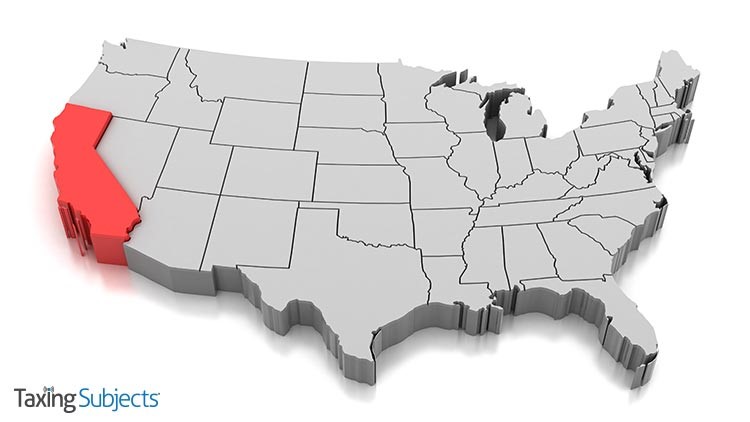by The Tax Place | Mar 4, 2021 | Tax Tips and News
Congress bookended 2020 with two taxpayer relief packages aimed at mitigating the financial strain caused by the ongoing coronavirus pandemic. The Coronavirus Aid, Relief, and Economic Securities Act and Taxpayer Certainty and Disaster Tax Relief Act of 2020 include a number of provisions that either create or modify tax relief for individual taxpayers and businesses.
Now that we’re well into tax season, taxpayers are sorting out how to claim new tax credits, like the recovery rebate credit and the employee retention credit. Lucky for business owners who still have questions about the latter, the Internal Revenue Service this week published Notice 2021-20, Guidance on the Employee Retention Credit under Section 2301 of the Coronavirus Aid, Relief, and Economic Security Act, which also covers how receiving a PPP loan affects the credit.
What is the employee retention credit?
The employee retention credit was created by the CARES Act to provide business owners a tax incentive for keeping employees on the payroll during the COVID-19 pandemic.
“For 2020, the employee retention credit can be claimed by employers who paid qualified wages after March 12, 2020, and before January 1, 2021, and who experienced a full or partial suspension of their operations or a significant decline in gross receipts,” the IRS explains in the Notice 2021-20 announcement. “The credit is equal to 50 percent of qualified wages paid, including qualified health plan expenses, for up to $10,000 per employee in 2020. The maximum credit available for each employee is $5,000 in 2020.”
The Taxpayer Certainty and Disaster Tax Relief Act of 2020—included in the December Consolidated Appropriations Act—allows PPP recipients to claim the employee retention credit and extends the eligibility window to include “the first two calendar quarters in 2021.”
What’s in IRS Notice 2021-20?
The IRS says that Notice 2021-20 answers a number of frequently asked questions that are addressed in the notice, including:
- Who are eligible employers?
- What constitutes full or partial suspension of trade or business operations?
- What is a significant decline in gross receipts?
- How much is the maximum amount of an eligible employer’s employee retention credit?
- What are qualified wages?
- How does an eligible employer claim the employee retention credit?
- How does an eligible employer substantiate the claim for the credit?
While Answer 49 in Notice 2021-20 confirms that PPP loan recipients are generally able to claim the employee retention credit, it also points out that wages claimed for the purposes of the credit will not qualify for loan forgiveness.
“An employer that received a PPP loan may claim the employee retention credit for any qualified wages paid to employees if the employer is an eligible employer that meets the requirements for the credit,” the notice reads. “However, qualified wages for which the employer claims the employee retention credit are excluded from payroll costs paid during the covered period (payroll costs) that qualify for forgiveness.”
The IRS closes the release by noting that this guidance only applies to tax year 2020, and that additional guidance for early 2021 is forthcoming—directing readers to the “Coronavirus Tax Relief for Businesses and Tax-Exempt Entities” page on IRS.gov for more information about CARES Act provisions that affect businesses.
Sources: IR-2021-48; Notice 2021-20
– Story provided by TaxingSubjects.com
by The Tax Place | Mar 3, 2021 | Tax Tips and News
A status report from the IRS shows income tax returns are being filed at a much slower rate than last year. But unlike in 2020, an extension to the April 15 filing deadline is unclear.
The Internal Revenue Service released its Filing Season Statistics for the Week Ending Feb. 19, 2021, showing just how the COVID-19 pandemic is affecting the filing process. The statistics compare snapshots of Feb. 21, 2020, which was day 26 of the 2020 filing season, and Feb. 19, 2021, which was day eight of the 2021 filing season.
The side-by-side comparison shows individual income tax returns lagging behind 2020 by more than 30 percent. Last year at this time, nearly 50 million individual tax returns had been filed; so far this year, fewer than 35 million have been submitted to the IRS.
The upshot of the numbers seems to be that, assuming the grand totals will be roughly the same as last year’s, the IRS could be hard-pressed to process the backlog if it comes late in the season—possibly necessitating a deadline extension.
IRS is staying the course—for now
In 2020, the pandemic was cited as enough cause to automatically push back the filing deadline to July. And some in Congress have asked the IRS to do the same this year.
Members of the House Ways and Means Committee and its Oversight Subcommittee are asking the IRS to consider an extended filing season. But the man at the top, IRS Commissioner Chuck Rettig, has said the agency is currently staying the course.
“We have no present plans to extend the filing season,” Rettig told a recent congressional hearing, as reported by The Hill.com. “Keep in mind, it creates a lot of confusion for taxpayers. It also backs up the Internal Revenue Service.”
Nevertheless, the commissioner acknowledged that a deadline pushback is not a foregone conclusion, adding that the IRS continues to consider that option.
IRS is seeing fewer and smaller returns
The IRS comparison shows fewer returns have been filed, but the refund total is lagging behind 2020 levels as well.
While this year’s average refund is only about 8 percent lower than last year’s, the total of all individual refunds issued so far is lagging 59 percent behind the 2020 numbers. More than $117 billion in refunds had been issued by this time last year; as of Feb. 19, 2021, just $48 billion had gone out.
So far this year, the number of e-filed tax returns from tax professionals has taken a hit, lagging 2020 levels at this time by nearly 40 percent this year. Self-prepared e-filed returns are also down from last year, but by 22 percent.
One statistic hints that today’s taxpayers are searching for their own answers to tax issues. The IRS reports visits to IRS.gov are up by 75 percent from the same time in 2020.
Sources: “IRS Chief says says agency has no present plans to extend tax-filing season,” TheHill.com; “Neal, Pascrell Raise Alarms Over Slow Start to 2021 Filing Season,” WaysAndMeans.House.gov
– Story provided by TaxingSubjects.com
by The Tax Place | Mar 2, 2021 | Tax Tips and News
The Internal Revenue Service has issued an alert covering amended returns and claims for the Domestic Production Activities Deduction, also known as DPAD.
This provision of tax law was repealed as part of the Tax Cuts and Jobs Act for taxable years after Dec. 31, 2017.
Since the repeal, the IRS has gotten “a wave” of questionable amended returns and claims for tax benefits that amount to billions of dollars.
Drilling for a gusher in tax benefits
“We have no qualms with taxpayers claiming benefits allowed by law,” said Doug O’Donnell, Commissioner, Large Business and International Division. “But a very high percentage of the claims for the now-repealed Domestic Production Activities Deduction are not properly supported by those claiming it.”
According to the IRS, a “large majority” of the questionable filings involve taxpayers claiming DPAD for the first time based on studies conducted after the fact, which contain unreasonable assumptions of facts and the law.
In 2018, the IRS’ Large Business and International Division (LB&I) launched a campaign to risk-assess claims or amended returns under the repealed section of the law.
The IRS will continue to audit the issue even though the section was repealed.
DPAD claims are being audited with the support of Chief Counsel, engineer specialists and the Corporate Income and Losses Practices Network.
The IRS issued a General Legal Advice Memorandum (GLAM) in July 2020 that addresses examples of meritless section 199 online software activity.
In many cases, the IRS says, taxpayers have conceded 100% of their claim once it was challenged. The IRS continues to take such section 199 cases to court.
Documentation is key
Examiners have been told to consider a number of factors in their investigations.
When appropriate, these include:
- Penalties set out in Section 6676, Erroneous Claim for Refund or Credit;
- Other applicable penalties;
- And referrals to the Office of Professional Responsibility (OPR).
Taxpayers and their advisors, the IRS notes, should ensure they have documentation to support their position. They should also expect the IRS to impose appropriate penalties unless the taxpayers can establish reasonable cause.
The IRS stresses that a study does not necessarily provide such reasonable cause.
“Meritless claims are harmful to tax administration and voluntary compliance. Any corporate taxpayer who is considering filing such a claim should reconsider. Taxpayers who have already filed can withdraw prior to IRS audit contact to avoid penalties,” said O’Donnell.
– Story provided by TaxingSubjects.com
by The Tax Place | Mar 2, 2021 | Tax Tips and News
Texas taxpayers impacted by this month’s brutal winter storms are getting some help from the Internal Revenue Service. The help includes extended deadlines and other relief measures.
The entire state of Texas is included disaster declaration issued by the Federal Emergency Management Agency (FEMA) and the IRS’ relief measures apply to all the counties in the FEMA declaration.
Any counties outside of Texas that are added to the disaster declaration will automatically qualify for the IRS relief package as well. The list of eligible counties and localities is available on the disaster relief page on IRS.gov.
Extension to file and pay
The tax relief announcement postpones various tax filing and payment deadlines that kicked in with the beginning of the filing season on Feb. 11. For Texas taxpayers, affected individuals and businesses now have until June 15, 2021, to file their returns and pay any tax originally due during the period.
The extension includes 2020 individual and business returns normally due on April 15, as well as the various 2020 business returns that would have been due on March 15. It also means affected Texas taxpayers now have until June 15 to make 2020 IRA contributions.
Also included in the relief package are quarterly estimated income tax payments normally due April 15, and quarterly payroll and excise tax returns normally due April 30. The extension also applies to tax-exempt organizations operating on a calendar-year basis, that have a 2020 return due on May 17.
Penalties on payroll and excise tax deposits due on or after Feb. 11 and before Feb. 26 will be abated as long as the deposits are made by Feb. 26.
The IRS disaster relief page has details on other return types, payments and tax-related actions qualifying for the additional time.
Tax relief is automatic
Taxpayers do not need to contact the IRS in order to qualify for the extensions and other relief. As long as the taxpayer’s address of record is in the federally declared disaster area, the extended deadlines are automatically applied.
If an affected taxpayer gets a late-filing or late-payment penalty notice from the IRS that has an original or extended filing, payment or deposit due dat that falls within the postponement period, the taxpayer should call the phone number printed on the notice to have the penalty abated.
An IRS statement says the agency is ready to help those taxpayers who may have affected by the winter storm but who live outside the current disaster area.
“The IRS will work with any taxpayer who lives outside the disaster area but whose records necessary to meet a deadline occurring during the postponement period are located in the affected area. Taxpayers qualifying for relief who live outside the disaster area need to contact the IRS at 866-562-5227. This also includes workers assisting the relief activities who are affiliated with a recognized government or philanthropic organization,” the IRS states.
Declaring losses
Individuals or businesses in a federally declared disaster area who suffered uninsured or unreimbursed disaster-related can claim them on either the return for the year the loss occurred (in this case, the 2021 return normally filed next year), or the return for the prior year. Taxpayers can, if they choose, claim these losses on the 2020 return they fill out this tax season.
Be sure to write the FEMA declaration number—4586—on any return claiming a loss.
The tax relief package is part of a coordinated federal response to the damage caused by this winter storm and is based on local damage assessments by FEMA. For more information on disaster recovery, visit disasterassistance.gov.
Source: IR-2021-43
– Story provided by TaxingSubjects.com
by The Tax Place | Mar 2, 2021 | Tax Tips and News
Unemployment claims may have fallen since the initial months of the pandemic, but millions of Americans continue to struggle with long-term joblessness and medical bills caused by the coronavirus. While a third round of federal Economic Impact Payments is expected this year, qualifying Californians will also receive a separate, state-issued payment: The Golden State Stimulus.
According to the “Golden State Stimulus” page on the State of California Franchise Tax Board website, most qualifying low-income California residents will automatically receive a $600 or $1,200 payment 45 to 60 days after filing their tax year 2020 state return—provided they file by Oct. 15, 2021 and meet other criteria.
Who qualifies for the Golden State Stimulus payment?
Generally, two groups of California residents can qualify for the Golden State Stimulus:
- CalEITC beneficiaries making $30,000 or less
- ITIN holders making $75,000 or less
Those who change their permanent residence to another state or country before the state actually issues a stimulus payment may not qualify, even if they would otherwise meet all other prerequisites.
Are there resources to help determine Golden State Stimulus eligibility?
The FTP site provides the following tables to help qualifying Californians determine the amount they are eligible to receive and what they should do to get a payment.
The first table shows how being a CalEITC recipient, ITIN holder, or joint filer can affect the amount of the stimulus payment:
|
Your stimulus amount
|
|
On your 2020 tax return…
|
Stimulus amount
|
|
You are a CalEITC recipient with an SSN
|
$600
|
|
You are a CalEITC recipient with an ITIN
|
$1,200
|
|
You are not a CalEITC recipient, but you:
- File with an ITIN and
- Made $75,000 or less (total CA AGI)
|
$600
|
|
You file a joint return and:
- At least one of you files with an ITIN
- Made $75,000 or less (total CA AGI)
|
$600
|
|
You file a joint return and:
- You are a CalEITC recipient
- At least one of you files with an ITIN
|
$1,200
|
The second table contains four scenarios that can affect stimulus eligibility, like qualifying for CalEITC but not claiming it on the 2020 return:
|
Scenarios for claiming the Golden State Stimulus
|
|
Scenario
|
What to do
|
|
You already filed your 2020 taxes and received a CalEITC refund.
|
You don’t need to do anything. You will receive your payment by direct deposit or paper check.
|
|
You filed your 2020 taxes with your ITIN and made $75,000 or less (total CA AGI).
|
You don’t need to do anything. You will receive your payment by direct deposit or paper check.
|
|
You filed your 2020 taxes but did not claim CalEITC and you’re eligible for CalEITC.
|
Amend your 2020 tax return immediately.
|
|
You will file a 2020 tax return but will not claim CalEITC.
|
You may still be eligible for the stimulus payment for 2020 if you (or your spouse):
- File with an ITIN and
- Made $75,000 or less (total CA AGI)
Be sure to file your 2020 tax return no later than October 15, 2021.
|
A final note: These stimulus payments are set to expire on November 15, 2021. That’s why the FTB recommends qualifying California residents file their 2020 return by October 15. Otherwise, they risk losing their payment.
For more information about the Golden State Stimulus, visit FTB.CA.gov.
Source: “Golden State Stimulus,” FTB.CA.gov/About-FTB/Newsroom/Golden-State-Stimulus/index.html
– Story provided by TaxingSubjects.com





